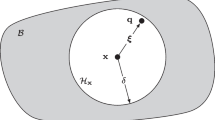Abstract
Nowadays supercomputers have already entered in the petascale computing era and peak rate performance is dramatically increasing year after year. However, most of current algorithms are not capable of exploiting fully such a technology due to the well-known parallel programming related issues, such as synchronization, communication and fault tolerance. The aim of this paper is to present a probabilistic domain decomposition algorithm based on generating suitable random trees for solving nonlinear parabolic partial differential equations. These are of paramount importance since many important scientific and engineering problems are modeled by such type of differential equations. We stress that such algorithm is perfectly suited for both current and future high performance supercomputers, showing a remarkable performance and arbitrary scalability.
While classical algorithms based on a deterministic domain decomposition exhibits strong limitations when increasing the size of the problem and the number of processors involved, probabilistic methods rather allow us to exploit efficiently massively parallel architectures, being the problem fully decoupled. Large-scale simulations runned on a high performance supercomputer confirm such properties.
Similar content being viewed by others
References
Acebrón JA, Busico MP, Lanucara P, Spigler R (2005) Domain decomposition solution of elliptic boundary-value problems. SIAM J Sci Comput 27(2):440–457
Acebrón JA, Busico MP, Lanucara P, Spigler R (2005) Probabilistically induced domain decomposition methods for elliptic boundary-value problems. J Comput Phys 210(2):421–438
Acebrón JA, Rodríguez-Rozas A, Spigler R (2009) Efficient parallel solution of nonlinear parabolic partial differential equations by a probabilistic domain decomposition. doi:10.1007/s10915-010-9349-2
Acebrón JA, Rodríguez-Rozas A, Spigler R (2009) Domain decomposition solution of nonlinear two-dimensional parabolic problems by random trees. J Comput Phys 228(15):5574–5591
Antia HM (1995) Numerical methods for scientists and engineers. McGraw–Hill, New Delhi
Arbenz P, Cleary A, Dongarra J, Hegland M (1999) A comparison of parallel solvers for diagonally dominant and general narrow-banded linear systems. Parall Distrib Comput Pract 2(4):385–400
Arbenz P, Cleary A, Dongarra J, Hegland M (1999) A comparison of parallel solvers for diagonally dominant and general narrow-banded linear systems II, EuroPar ’99 parallel processing. Springer, Berlin, pp 1078–1087
Arnold L (1974) Stochastic differential equations: theory and applications. Wiley, New York
DuChateau P, Zachmann D (2002) Applied partial differential equations. Dover, New York
Freidlin M (1985) Functional integration and partial differential equations. Annals of mathematics studies, vol 109. Princeton Univ Press, Princeton
Karatzas I, Shreve SE (1991) Brownian motion and stochastic calculus, 2nd edn. Springer, Berlin
Keyes DE (2003) Domain decomposition methods in the mainstream of computational science, Proceedings of the 14th international conference on domain decomposition methods, UNAM Press, Mexico City, pp 79–93
Kloeden PE, Platen E (1992) Numerical solution of stochastic differential equations. Springer, Berlin
Petersen W, Arbenz P (2004) Introduction to parallel computing. A practical guide with examples in C. Oxford Univ Press, London
Quarteroni A, Valli A (1999) Domain decomposition methods for partial differential equations. Oxford Science Publications/Clarendon, Oxford
Poisson-Vlasov in a strong magnetic field: a stochastic solution approach R. Vilela Mendes arXiv:0904.2214 (April 2009)
Waymire E (2005) Probability and incompressible Navier-Stokes equations: an overview of some recent developments. Prob Surv 2 1–32
Author information
Authors and Affiliations
Corresponding author
Rights and permissions
About this article
Cite this article
Acebrón, J.A., Rodríguez-Rozas, Á. & Spigler, R. A fully scalable algorithm suited for petascale computing and beyond. Comput Sci Res Dev 25, 115–121 (2010). https://doi.org/10.1007/s00450-010-0105-5
Published:
Issue Date:
DOI: https://doi.org/10.1007/s00450-010-0105-5




